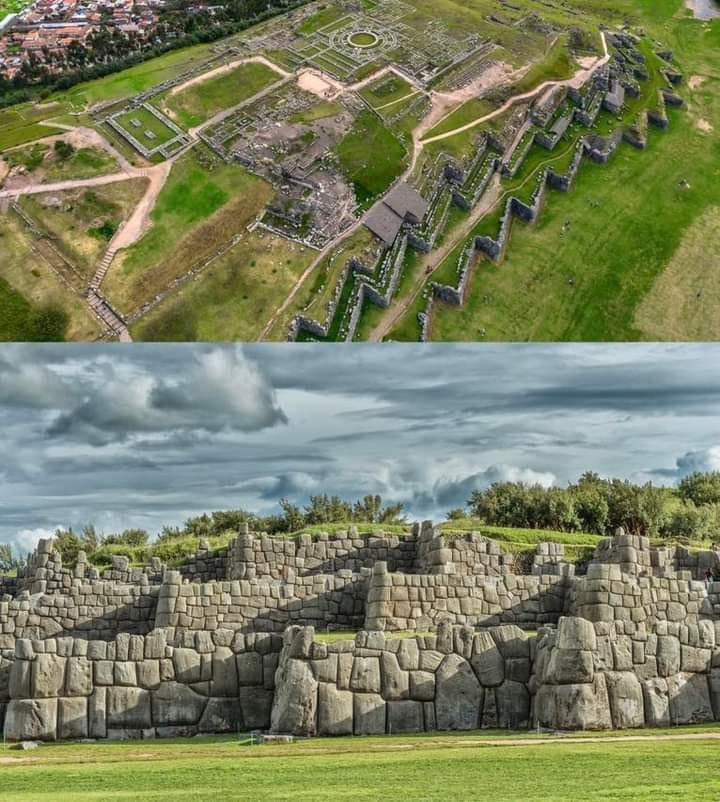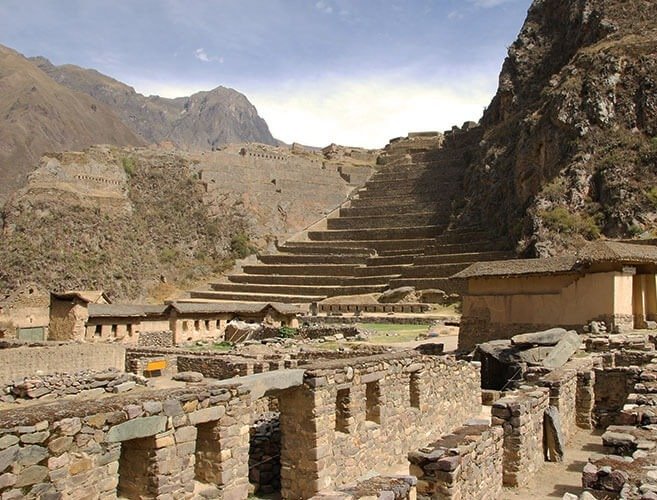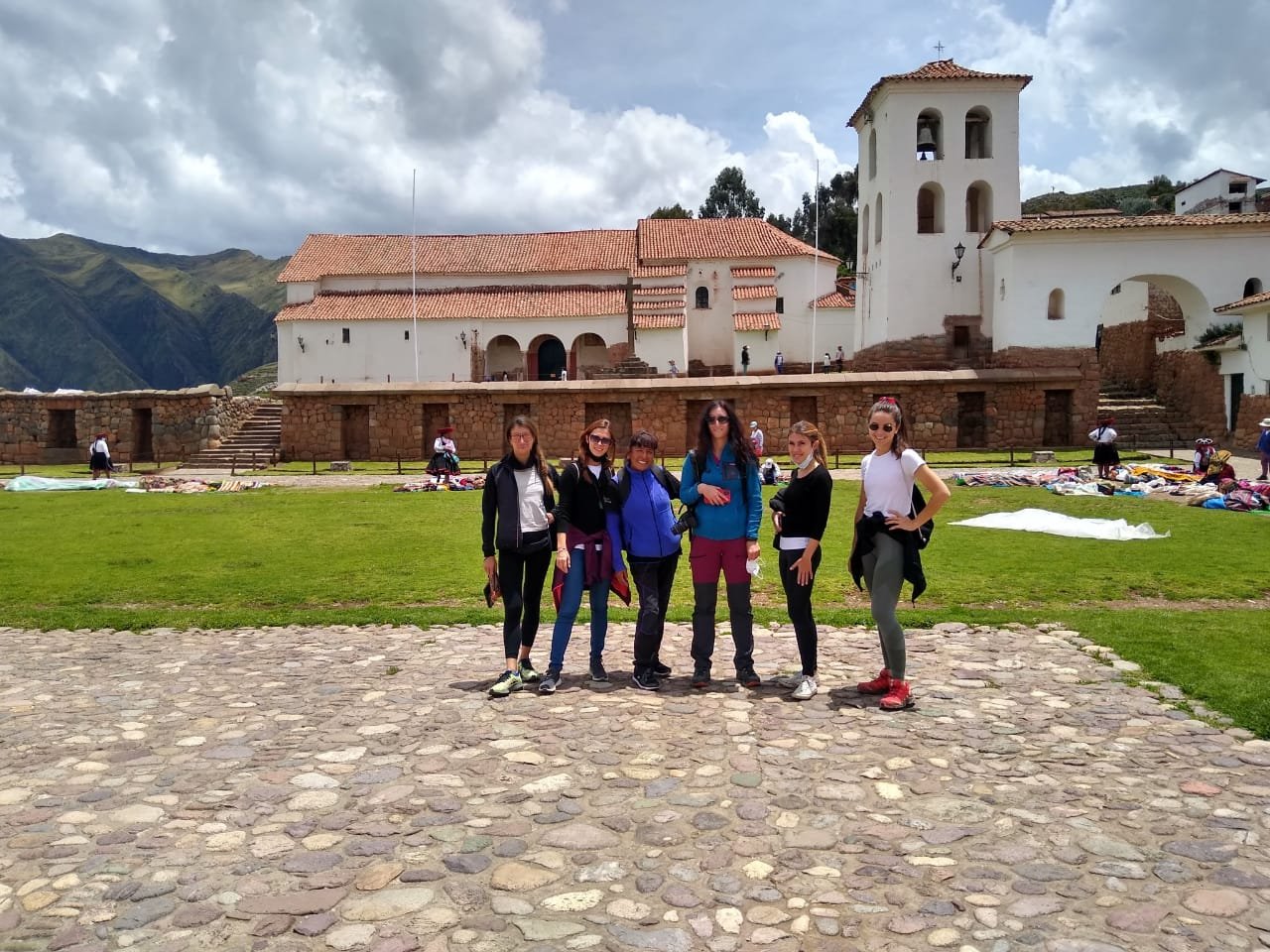
Focus and Go!
Machu Picchu and the Sacred Valley 3-Day Tour
Day 1 - Cusco City Tour
-

Coricancha - 45 Minute Guided Tour
The Coricancha was the most important religious temple of the Inca Empire. It is located in Cusco, the geographic and political center of the Empire. The word Coricancha can be broken down into two separate words: Qori (gold) and cancha (walled temple). The temple of Coricancha was where the Incas paid homage to “Inti”, their supreme God.
-

Saqsaywaman - 1 Hour Guided Tour
Located only 2 Kms. away from the city of Cusco, these Incan archeological ruins were touted by Garcilaso de la Vega (a Peruvian chronicler) as “the best architectonic construction the Incas realized during their apogee”.
Its construction began in the 15 th century with Inca Pachacutec and was finished in the 16 th century under the reign of Huayna Capac. In 1536, Manco Inca, the leader of the resistance of Vilcabamba, battled the Spaniards at this location. Due to the destruction caused by the Spanish conquistadores during that battle, one can only see about 20% of the original architectural complex.
-

Q'enqo - 30 Minute Guided Tour
Q’enqo is located 4 kilometers northeast of the city of Cusco. The word Q’enqo means ‘labyrinth’ or ‘zigzag’.
This archeological site strictly served a religious function. On the outside, one can observe a semicircular amphitheater with trapezoidal niches and a monolith in the shape of a puma that measures approximately 6 meters long.
-

Puca Pucara - 30 Minute Guided Tour
In Puca Pucara you will find interior courtyards, baths, aqueducts and an ancient, well-known trail. Unlike other archeological ruins, the buildings were made of small and medium size stones with rough surfaces. The urban layout of this site is adequate and functional for its use as a control and administration post.
-

Tambomachay - 1 Hour Guided Tour
Tambomachay in Spanish, or Tampumachay in Quechua means ‘place to rest’. This archeological site was a place to worship water and a place where the Inca, ruler of the Inca Empire, could rest. It is located 7 kilometers northeast of Cusco, on the Andes Mountains, at 3,700 meters above sea level (12,000 ft). This site consists of a series of aqueducts and channels and several waterfalls built within the stone walls. The Incas designed a main waterfall with 2 secondary falls that are exactly alike. It is said that if one were to place 2 empty bottles under the secondary falls, at the same time, they would fill up in exactly the same amount of time.
Day 2 - The Sacred Valley
-

Pisac - 2 Hour Guided Tour
This town has 2 areas: one is Incan style and the other one is colonial style. Its main plaza is a colorful and entertaining place with a sizeable outdoor handicraft market. This town is known for its astronomical observatory. The architecture of Pisas shows Incan stonework walls used as foundations to colonial buildings. The construction of these buildings was ordered by Viceroy Francisco de Toledo. In this town, one may attend mass in Quechua together with indigenous residents, varayocs (an authority of Incan origin in charge of the administration of justice in local communities) or regional mayors. In this town, one can see how Inca agronomists used what is known as ‘andenes’ to increase the useable surface area of the mountain sides for farming.
-

Ollantaytambo - 2 Hour Guided Tour
One of the last living Inca Cities. This jewel of a village boasts one of the most monumental archeological complexes of Inca society. Commonly known as a ‘fortress’ due to its monumental walls, this village was a ‘tambo’ or a city for lodging. It was strategically located to protect and control the Sacred Valley. Its architecture, as well as the quality of stonework (each stone individually worked) make Ollantaytambo a surprising and unimaginable work of art built during Inca times. You will discover the ‘Temple of the Sun’ together with its gigantic monoliths, the Inca Baths, the Baths of the Ñusta as well as an irrigation system.
-

Chinchero - 2 Hour Guided Tour
In this picturesque Inca town, one can enjoy views of the Andes Mountain Range with its majestic snow-capped peaks, as well as visit an archeological site and walk through colonial style houses that lead you to a colonial temple. This is the land of textiles and handicrafts.
-

Urubamba
This is the city where we will stop for a buffet-style lunch that includes typical Peruvian food choices.
Day 3 - Machu Picchu
-

Machu Picchu - Full Day Guided Tour
Machu Picchu, the highlight of your trip to Peru, is a full day tour that starts with an early pick up at your hotel in Cusco, a 2-hour trip to the train station of Ollantaytambo where you will board the train to the town of Aguas Calientes at the base of the ruins. At this point, you will board a modern bus that will take you 25 minutes uphill, to the entrance of the ruins of Machu Picchu. This is the only way to get to the citadel of Machu Picchu. Machu Picchu was designed and built around the year 1450 during Inca Pachacutec’s reign. This project demanded the participation of specialists in architecture, engineering and astronomy besides the numerous laborers required to do the physical work. It was designed as a religious, political and administrative center, as well as a sacred space.